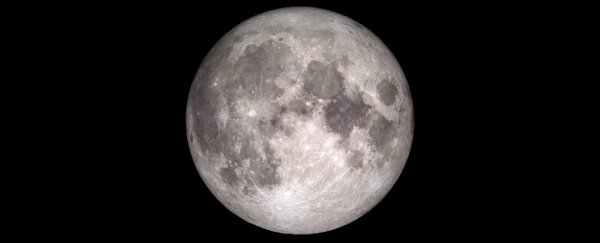The Moon is Earth's only natural satellite, circling the planet at an average distance of roughly 385,000 kilometers (239,000 miles).
With a diameter of just under 3,500 kilometers (about 2,160 miles), the cratered surface of the rocky object is one of the most recognisable objects in the sky.
A single orbit of our planet takes the Moon 27.3 Earth days - the same amount of time it takes for the satellite to also rotate once on its axis. As a result, half of the Moon's surface perpetually faces Earth.
The other half (erroneously referred to as the dark side of the Moon, in spite of receiving the same amount of sunlight as the more familiar side) was finally seen for the first time in 1959 when the Soviet probe Luna 3 beamed back a grainy set of photographs.
This 'tidally locked' orbit is the result of Earth and the Moon pulling on one another, slowing the rotation of each. Earth's own rotation has similarly been affected by the braking effect of the Moon's gravity, adding around 1.4 milliseconds to our day every century.
At the same time, the Moon is gradually inching away from our world, adding anywhere from a few millimetres to nearly 30 centimetres to its orbiting distance every year. Back when it formed some 4.5 billion years ago, the Moon was 16 times closer, looming an estimated 24 times larger in the sky.
How was the Moon formed?
It's widely accepted that the Moon was formed from the debris of a collision between an infant Earth and a planet roughly the size of Mars, posthumously named Theia.
Early in the Solar System's formation around 4.5 billion years ago, many emerging planets and protoplanets would have had overlapping and unstable orbits that brought them within range of colliding.
An impact between two similarly-sized bodies could have vaporised both, leaving a mix of their molten minerals and heated gases swirling under the pull of gravity.
Lighter elements and debris could have aggregated to form the Moon, with denser materials from Theia settling into a core for a 'rejuvenated' Earth to form around.
Materials brought back by the Apollo missions largely support this hypothesis over other ideas, such as those that suggest the Moon was captured by Earth's gravity. A reanalysis of oxygen isotopes from the lunar surface in 2020 added weight to the Theia hypothesis.
Discrepancies over the precise age of the Moon, varying from 4.425 billion to just over 4.5 billion years ago, suggest there could still be some wiggle room for an alternative explanation. One is that it formed from the vaporised remains of yet another young world - a ring of debris called a synestia.
Why haven't humans returned to the Moon?
While more than 105 robotic spacecraft have been launched to explore the Moon's surface, only a dozen humans have set foot on our nearest neighbour in space. The last was in 1972, when the commander of the Apollo 17 mission, Gene Cernan, spent a total of 22 hours exploring the Taurus-Littrow Valley.
A significant obstacle to returning humans to lunar exploration is an ability for any government or organisation to justify the cost to citizens and stakeholders. In other words, a government or well-funded space company would simply need to argue its worth it.
This was easier to do in an era of tension between superpowers, which threatened a return to global conflict. In a race to demonstrate their technological superiority, the US and Soviet Russia provided each other with a reason to fund space programs.
Today, without this threat, similar programs would need good reasons to argue for spending more than US$100 billion - an estimate calculated in 2005 on what might be needed to restart human-focussed lunar programs.
Pushing the limits on human occupation of the lunar surface would also require solving a number of problems involving radiation, the scouring effects of electrostatically charged Moon dust, and huge variations in temperature.
NASA's Artemis missions could return humans in lunar expeditions within the next decade. And this time, we might even have the first footprints left by a woman in the lunar dust.
Whether the program would be a start of a new era in space travel, or simply a short-lived trip down memory lane, would depend on whether they can show there's value in the risk and cost of having a long-term presence on our only natural satellite.
All Explainers are determined by fact checkers to be correct and relevant at the time of publishing. Text and images may be altered, removed, or added to as an editorial decision to keep information current.
